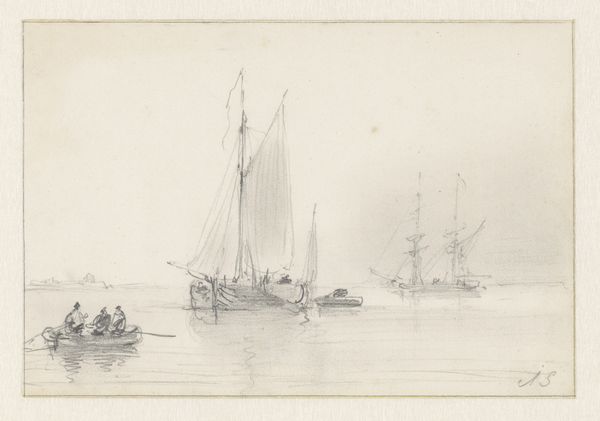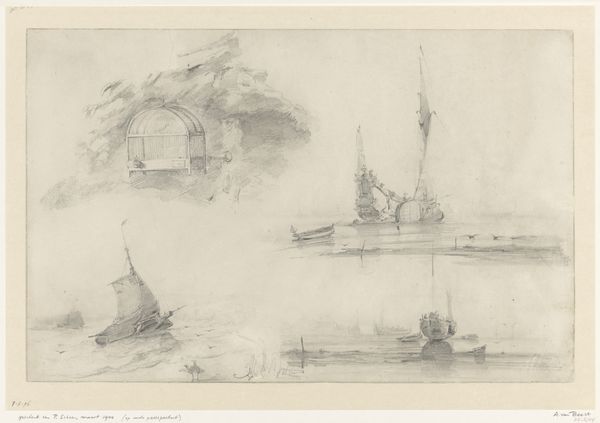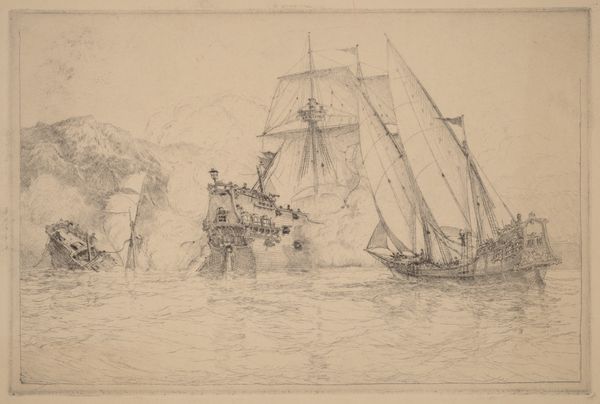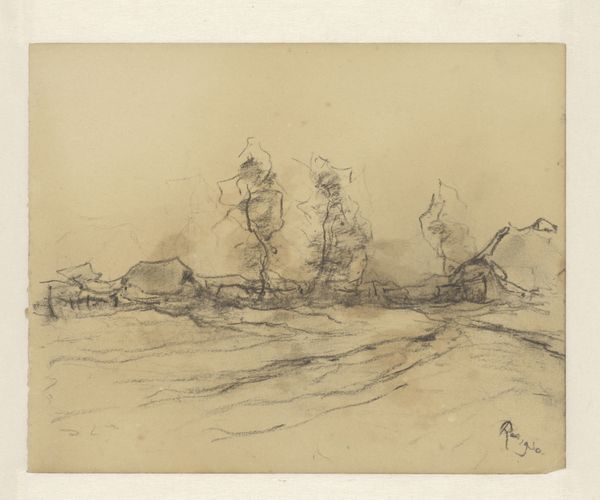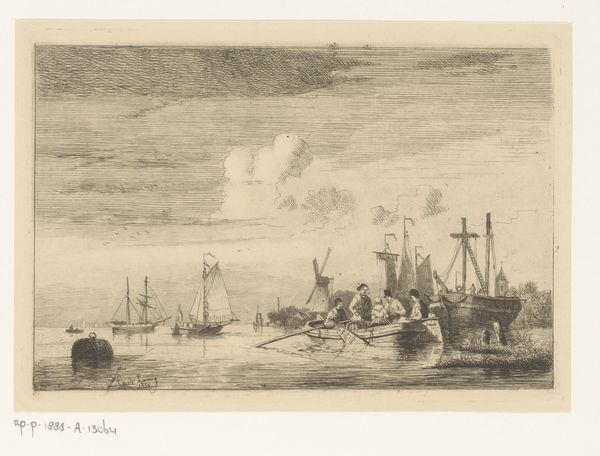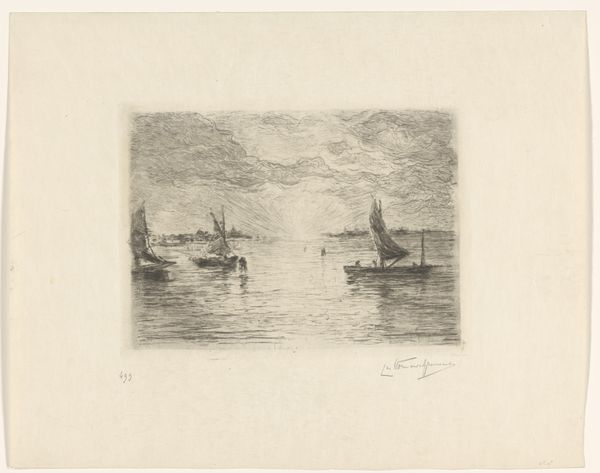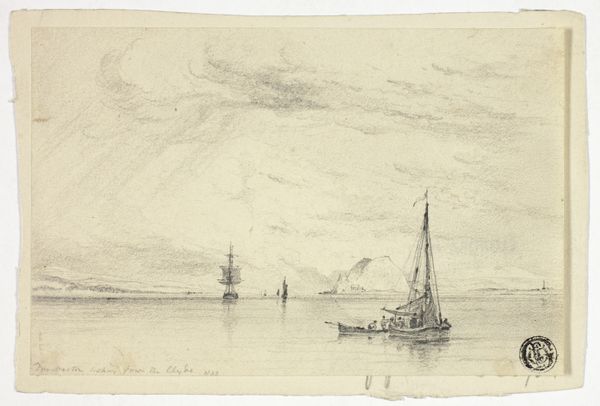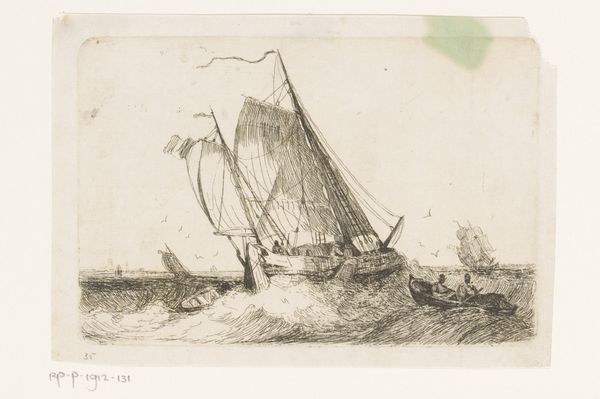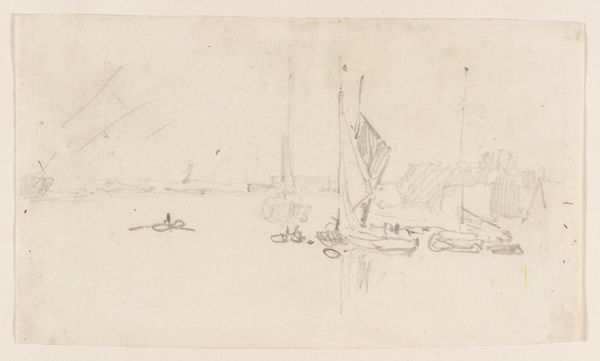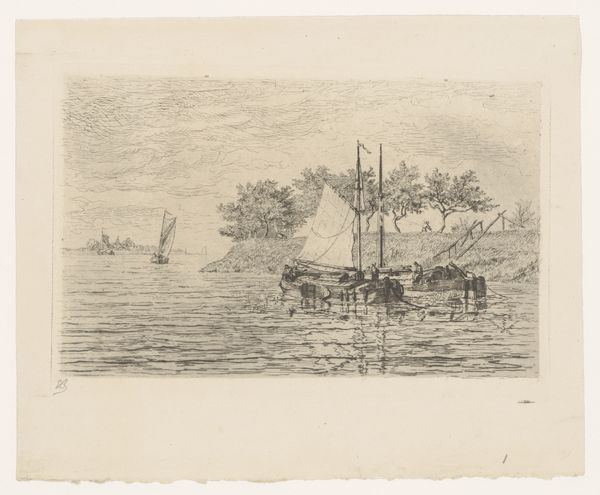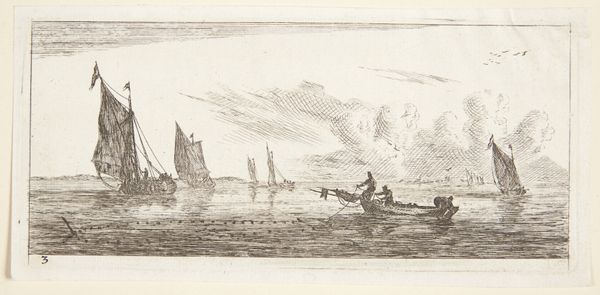
drawing, etching, plein-air, paper, pencil
#
drawing
#
etching
#
plein-air
#
landscape
#
river
#
etching
#
paper
#
pencil
Dimensions: height 152 mm, width 258 mm
Copyright: Rijks Museum: Open Domain
Curator: Here we have a landscape, "River View on the Rhine," rendered in pencil and etching on paper by Andreas Schelfhout. It's currently held here at the Rijksmuseum. Editor: There’s a stark tranquility about it. The hazy pencil strokes almost dissolve the details into a wistful scene. Curator: Schelfhout was known for his plein-air drawings. They reflect the artistic and social embrace of nature during the 19th century. But also served as studies to be turned into paintings later in his studio. Editor: The loose rendering gives it the feel of a quick observation. I’m wondering what role the river plays in shaping community—for livelihoods, transportation. Were the people who relied on it facing new struggles or challenges? Curator: The Rhine was a crucial artery for trade and travel, yes. Drawings such as these also romanticized the local. Focusing on a natural simplicity distanced from rapid industrialization. They acted as a sort of imagined past as society around them radically shifted. Editor: Exactly. I see both appreciation and a certain idealized escape from the very real economic inequalities and urban disruptions that rivers like the Rhine both enabled and exacerbated. The romantic portrayal obscures labour—we only get the pleasure craft, never the freighters carrying resources appropriated in colonial spaces that are actually feeding this river-based economy. Curator: The figures depicted do seem content. Yet landscape as a genre has often served very specific political and cultural purposes, promoting notions of national identity and territorial ownership, ideas still at play today. Editor: Yes, the act of observation is never politically neutral. Whose stories are deemed worthy of representation, and what is deliberately left out, is revealing of how power operates through these idyllic vistas. It’s this dynamic of celebrating the beauty while being mindful of its complicated context, that draws me to the work. Curator: For me it is more the window into how these artists perceived the changes in their world. It reflects both a visual record, but an insight into the changing public life. Editor: It's an invitation to consider whose vision of the "good life" is being subtly reinforced, a reminder to look at any landscape with a critical eye.
Comments
No comments
Be the first to comment and join the conversation on the ultimate creative platform.
